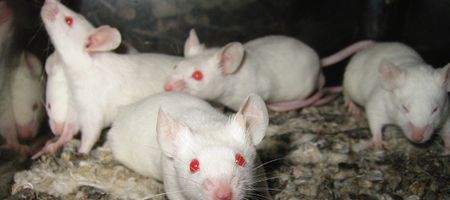Mice bred to age too quickly lived up to three times as long when injected with stem cells from younger mice, raising the possibility that the normal ageing process could one day be slowed.

Scientists at the University of Pittsburgh School of Medicine injected mice suffering from progeria with stem cell-like progenitor cells from young, healthy animals – and found that their health and lifespan improved.
While it was previously known that stem cell dysfunction, such as poor replication and differentiation, showed up in a variety of tissues in old age, it wasn’t known whether this was a cause of the ageing process or a result.
“Our experiments showed that mice that have progeria, a disorder of premature aging, were healthier and lived longer after an injection of stem cells from young, healthy animals,” says Dr Laura Niedernhofer. “That tells us that stem cell dysfunction is a cause of the changes we see with aging.”
The stem/progenitor cells in the muscles of progeria mice showed the same features as those in normal, old mice. They were fewer in number, didn’t replicate as often or differentiate as readily into specialized cells and were impaired in their ability to regenerate damaged muscle.
But when 17-day-old progeria mice were injected in the abdomen with the stem cells, their lifespan went far before the normal 21 to 28 days, with some living beyond 66 days.
The injected mice grew almost as large as normal ones, and new blood vessel growth in the brain and muscle -even though the stem/progenitor cells weren’t detected in those tissues.
In fact, the cells didn’t migrate to any particular tissue after injection into the abdomen.
“This leads us to think that healthy cells secrete factors to create an environment that help correct the dysfunction present in the native stem cell population and aged tissue,” says Niedernhofer.
“In a culture dish experiment, we put young stem cells close to, but not touching, progeria stem cells, and the unhealthy cells functionally improved.”
The team hasn’t yet tried the same technique with animals that age normally – but the findings urge further research, says Niedernhofer.






